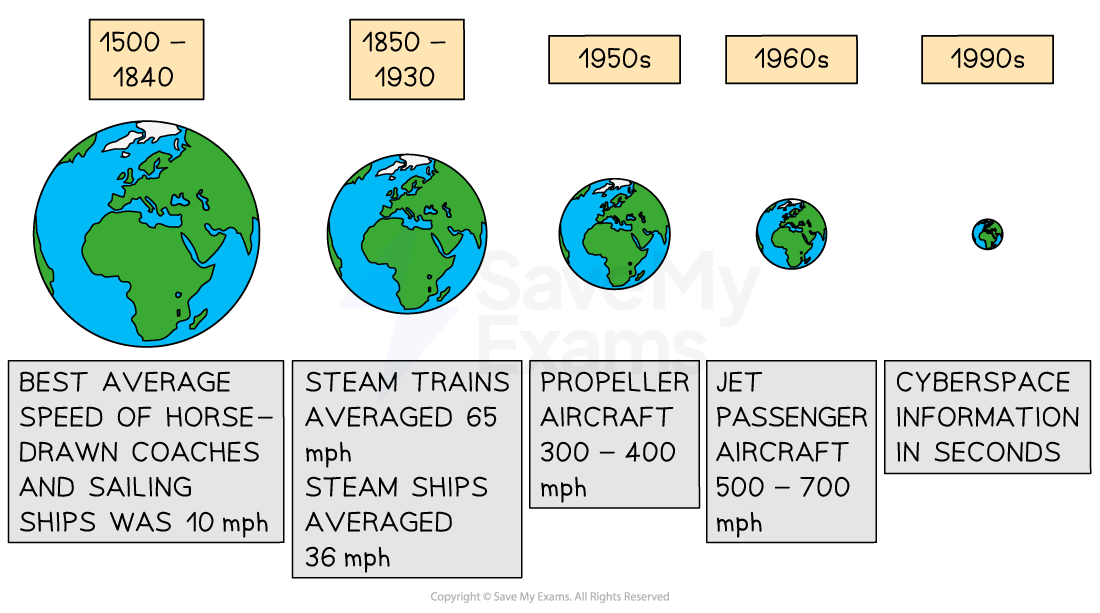Globalisation
Globalisation
- Globalisation is the increasing connectedness of countries around the world through movement of goods, services, capital and ideas across borders
- People and countries have become more connected in four main ways

- Transnational Corporations (TNCs) – Companies who operate in many countries producing and selling goods and services
- Glocalisation – Changing the design of products to meet local tastes or laws
- Trading blocs – A group of countries and/or organisations that work together for trading purposes
Global Connections
- The process of how global connections are made have changed over time
- Past global connections were made through trade, Colonialism and co-operation between countries through international organisations
- Modern globalisation
- Lengthening of connections between people and places, with products obtained from further away than ever before
- Deepening of connections with the feeling of being deeply connected to other people and places in every aspect of life
- Faster speed of connections, with the ability to communicate with others in real time using new technologies or travelling quickly between continents
Global Flows & Interdependence
- The world consists of networks connecting countries together
- These connections between countries represent different types of network flow
- Flows of movement
- Capital – money flows through the world’s stock markets
- Commodities – valuable raw materials (e.g., fossil fuels, food and minerals) are traded
- Information – the internet allows real-time communication between countries globally
- Migrants – the permanent movement of people still face challenges due to border controls and immigration laws
- Tourists – Budget airlines have made it possible for people to travel further more easily
- These global flows have increased the interconnectedness of places which has increased the interdependence of places
Exam Tip
Remember to use relevant geographical terminology in your answers because it will help to show the examiner that you have a clear understanding of the topic for example interdependence and Transnational Corporations.


